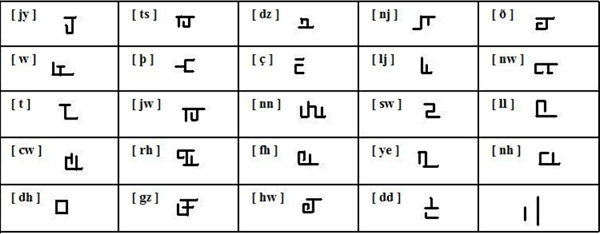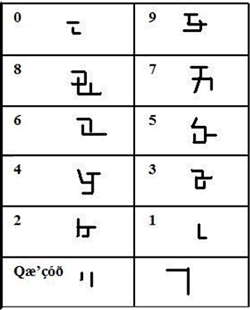
The Qelsh script was invented in December 2009 by Nathan Baciao to write his conlang by the same name. Inspiration for the language came to him one night when he heard its sounds when walking on a beach in his dreams.
The vowels have two forms and two sounds. They are not the same as in English and and are sometimes never heard in speech when whispered. The vowels can be switched around like a code. The second form and sounds are below the top vowels.



The qæ'çóð symbol separates the numerals.

Ddaljø fhåjy nudh io çærh wiqóþ. Ljew, jyohw öí jwånh swax.
We are all the children of one God. He who came, is coming again.
If you have any questions about Qelsh, you can contact Nathan at: nbtwilightprince[at]gmail[dot]com
Constructed scripts for: Ainu | Arabic | Chinese languages | Dutch | English | Hawaiian | Hungarian | Japanese | Korean | Lingala | Malay & Indonesian | Persian | Tagalog / Filipino | Russian | Sanskrit | Spanish | Taino | Turkish | Vietnamese | Welsh | Other natural languages | Colour-based scripts | Tactile scripts | Phonetic/universal scripts | Constructed scripts for constructed languages | Adaptations of existing alphabets | Fictional alphabets | Magical alphabets | A-Z index | How to submit a constructed script
[top]
You can support this site by Buying Me A Coffee, and if you like what you see on this page, you can use the buttons below to share it with people you know.

If you like this site and find it useful, you can support it by making a donation via PayPal or Patreon, or by contributing in other ways. Omniglot is how I make my living.
Note: all links on this site to Amazon.com, Amazon.co.uk
and Amazon.fr
are affiliate links. This means I earn a commission if you click on any of them and buy something. So by clicking on these links you can help to support this site.
[top]